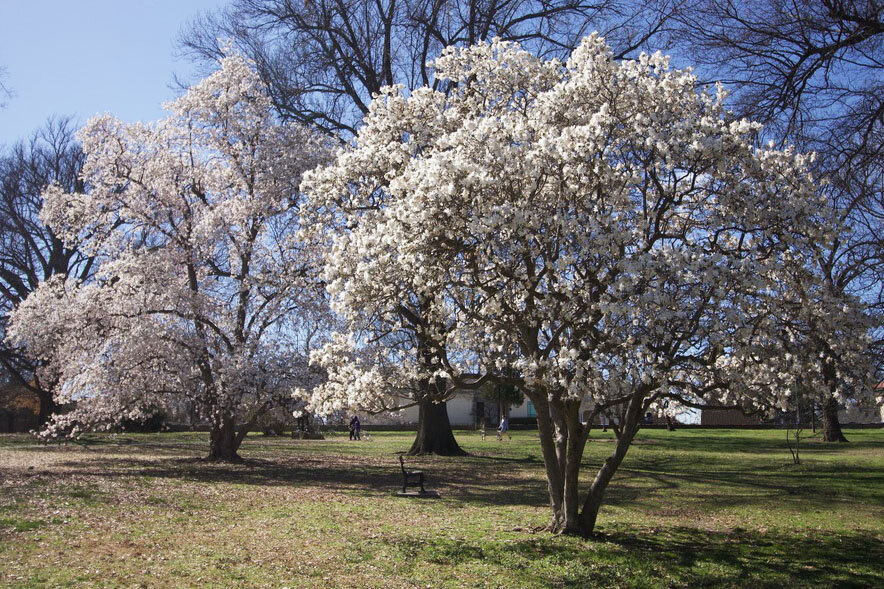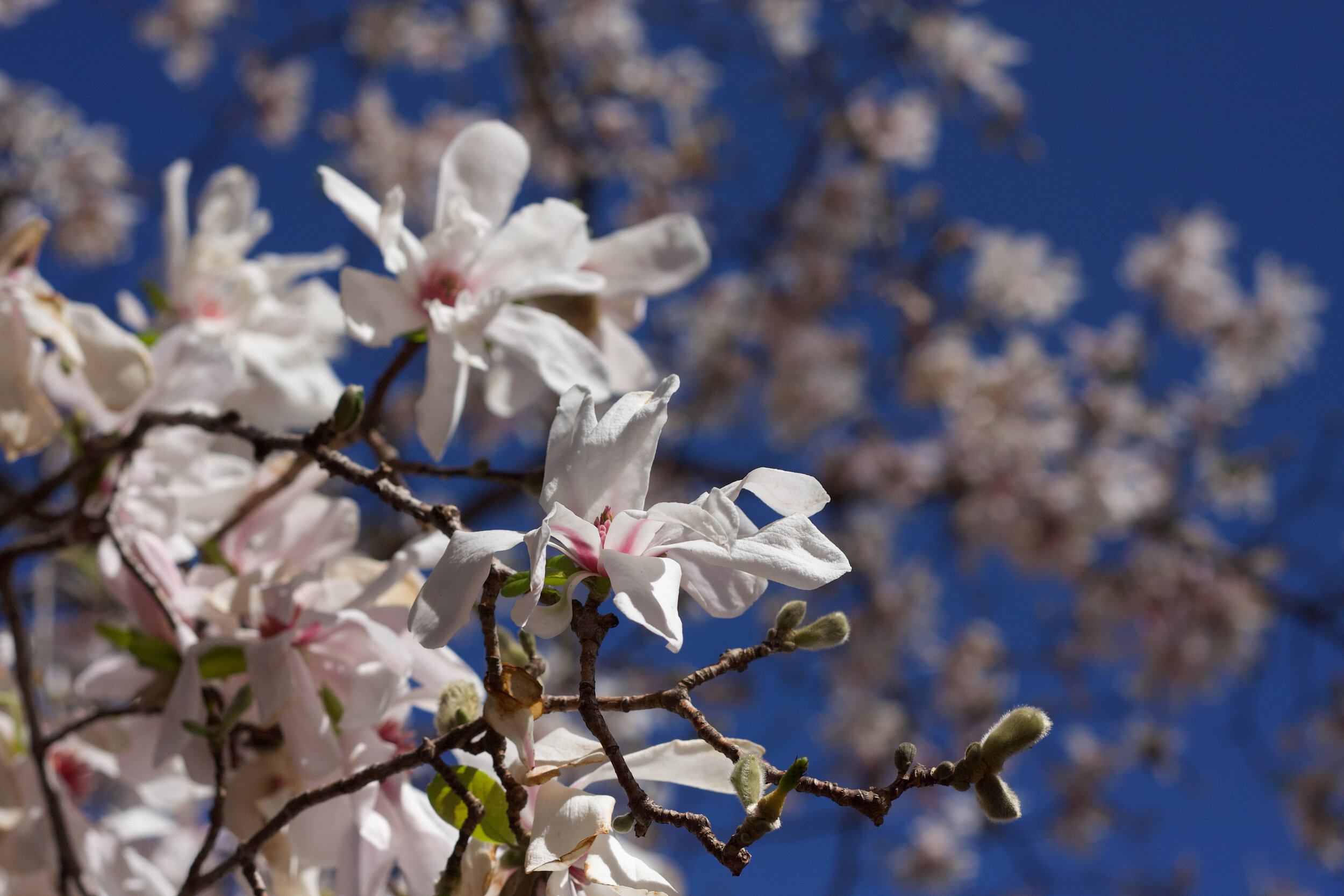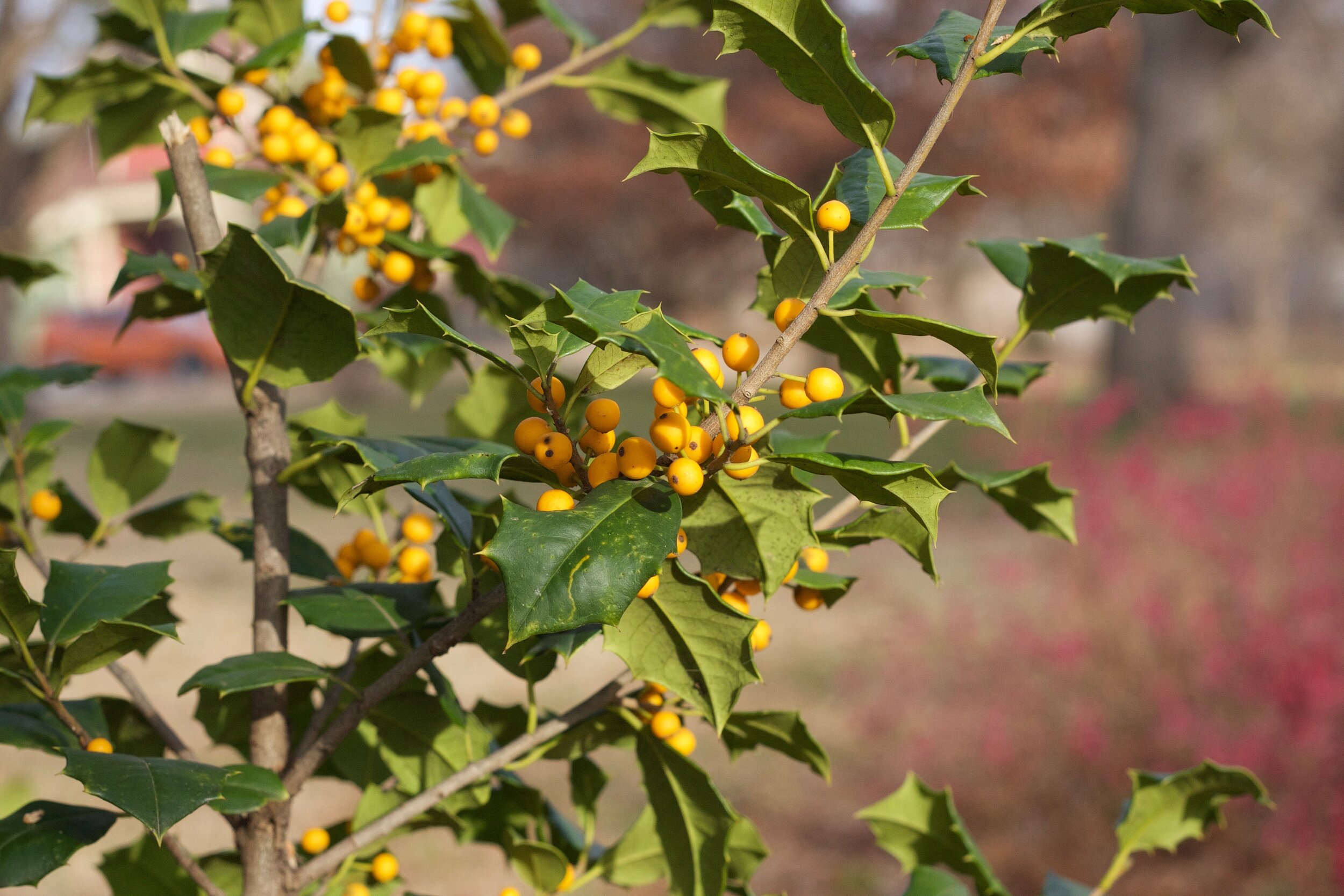tulsa
arboretum
A 1964 Project of the Tulsa Garden Center
THE ARBORETUM NEEDS YOUR HELP
Originally funded by the Tulsa Garden Center in 1964, the Arboretum at Woodward Park is being restored. We hope you will consider a contribution in support of the Arboretum while at the same time commemorating your family’s legacy within Woodward Park for years to come.
Not sure which current tree to sponsor? Check out “If the Trees Could Talk” below and read about some of our very favorites.
Your sponsorship could be a memento of a special day like a wedding, retirement or anniversary, or even the birth or death of a loved one. When you sponsor a tree, you are supporting the health of the entire Arboretum.
Arboretum Memorial or Sponsorship - Send an inquiry email to afusco@tulsagardencenter.org
$5,000 Park Bench Sponsor - Send an inquiry email to info@tulsagardencenter.org
Our favorite corner of the park
If the trees could talk…
The Arboretum at Woodward Park, a project of the Tulsa Garden Center, has been a part of the Tulsa landscape since 1964 when it was dedicated to the City of Tulsa. It has captured the hearts and minds of innumerable Tulsans since then, and continues to do so still!
One thing that hasn’t been a part of the Arboretum’s existence, however, has been a dedicated plan of care to ensure the health and vitality of the trees which so many people love. The three and a half-acre tree museum underwent a restoration in the mid-nineties, and once again requires some extra TLC.
The Tulsa Garden Center has begun to dream about what a restoration will look like, and a part of the dream is a sustaining endowment so that the beloved space does not reach the same level of needed maintenance it faces today.
Some of the trees which have been growing there the longest share their stories below. If you would like to donate to the continued maintenance mentioned above, please click the donate button at the top of this page.
American Fringe Tree
what they would say…
Hackberry Celtis occidentalis
I am native to the US, and I am often found in the wild growing along floodplains. Many refer to me, fittingly, as “one tough tree” and I am one of two trees that predate the Arboretum, which means I have been here since before the Arboretum was created in 1964. Birds and other wildlife love to munch on my berries, which turn a dark shade of purple when they ripen in the fall, and Native Americans used my berries as a source of food and for various medicinal purposes.
Western Soapberry Sapindus drummondii
I am a North American native tree, and if you come see me from May to June, you will see my delicate blooming cream-colored flowers, followed by “soap berries” (where I get my name!) which last until the fall. When crushed in water, my fruit creates suds, which were used by Native Americans as a laundry soap. I was an original 1964 planting in the Arboretum.
Western Soapberry
Pin Oak Quercus palustris
I am a North American native, and grow often on bottomlands or moist uplands, though my best developed peers can be found in the Ohio River Valley. My acorns are consumed by songbirds and Woodward Park’s abundant squirrels, and in many places are a particularly important food for ducks. I am one of the original 1964 plantings in the Arboretum.
Pink Star Magnolia Magnolia stellata 'rosea'
I am a sight at the beginning of spring! You will find my branches adorned with star shaped pale pink buds. Though I have been here since the Arboretum’s inception, my species originally hales from Japan, and was believed to be introduced to North America from a nursery in California in the late 1800’s.
Pink Star Magnolia
White Oak Quercus alba
Though I am a slow grower, I am especially prized for the strength of my wood. Some would refer to my trunk as short and stocky, but I prefer the term sturdy, and my limbs are anything but short! My leaves provide beautiful color in the fall, and I can grow for centuries, which is what I hope for my time in the Tulsa Arboretum. I was a part of the original 1964 plantings, and I hope to be here for years to come.
Vernal Witch Hazel Hamamelis vernalis
I am actually a shrub, as opposed to a tree, but lucky for me I have other fellow shrubs that call the Arboretum home as well! Personally, I love late winter, because that’s when you can find me adorned with wispy orange and red flowers which stand out against the otherwise stark landscape. I am one of the original plantings in the Arboretum, so I have been growing here for well over 50 years.
Vernal Witch Hazel
Shagbark Hickory Carya ovata
You can probably tell where I get my name by looking at my shaggy trunk! I am native to the Midwest section of the United States, and I am also one of the original plantings in the Arboretum. You may not be able to tell, but I am not in the best health. The former City of Tulsa Urban Forester said that it may have something to do with the fact that I was planted a little too low. There should be some trunk flare at my base, but sadly there isn’t any. I am not sure how much longer I will be able to safely grow in the Arboretum.
Maidenhair Tree Ginkgo biloba
My common name is derived from the shape of my leaves, which resemble the shape of leaves on a maidenhair fern. I am considered “prehistoric” because I am the only surviving member of a group of ancient plants believed to inhabit the earth up to 150 million years ago! I am a male tree, but I also have a female counterpart. Though most people just complain about the foul-smelling sticky fruit the female trees produce, the seed within the fruit is actually considered a delicacy by many East Asians, and is also consumed for its medicinal properties. It’s also mildly toxic, so don’t try it at home. Do return to the Arboretum in the autumn to see me turn a vibrant yellow! I was planted as one of the original plantings in 1964, and have enjoyed putting on a dramatic fall show since then.
Maidenhair Tree
Black Oak Quercus velutina
A member of the red oak family, I am native to central and northeastern North America, and am one of two trees that predate the formation of the Tulsa Arboretum. My taproot is very long, which adds to my strength and stability, but it also makes me difficult to transplant, which is why you may not find me for sale at nurseries. Come back and see me in the fall when my coloring takes on shades of orange and red.
Yellow Fruited American Holly Ilex opaca 'xanthocarpa'
Some people say that I am one of the loveliest trees in the Arboretum! I am sure you have seen a myriad of hollies in your life – but did you know that there were such holly trees that make yellow fruit? If you come back in the late fall and early winter, you can see the yellow berries, and since I am an evergreen, you can see my lovely green leaves all year. It’s been said that I can grow up to 50 feet tall. In 2015, my height was measured to be 47 feet and my spread was nearly 30 feet wide. Like the Dawn Redwood, I am also an Oklahoma State Champion tree. I was one of the original plantings in the Arboretum, so I have been growing here since 1964!
Yellow Fruited American Holly
Water Oak Quercus nigra
UPDATE AS OF MAY 2021 - Unfortunately, the Water Oak did not make it past the unusually cold temperatures in late February, and was removed in the summer.
I am a North American native, and can adapt easily to wet and swampy conditions, which is why they call me Water Oak. I think my leaf shape is quite interesting, and squirrels love to snack on my acorns. I was one of the original 1964 plantings in the Arboretum, but sadly I suffered from pretty severe lightning damage in 2005. I have been in decline since then, and though I love it here, I am not sure how much longer I will be able to safely grow in the Arboretum.
Sugar Maple Acer saccharum
I am a Midwest native and though I am lovely all times of the year and provide excellent shade in the summertime, people especially love seeing my brilliant fall color. I am also one of the original plantings in the Arboretum, but you can probably see that I have been affected by canker and other pests that have hastened my decline. I am not sure how much longer I will be able to safely grow in the Arboretum.
Sugar Maple
Sweet Gum Liquidambar styraciflua
I am a valuable forest tree and can often be found in wet river bottoms and swamps when out in the wild. Some people are bothered by the spiny fruit I produce, which lasts through the fall and winter, but the truth is that many wildlife eat the seeds which come from my spiny fruit! My leaves also turn a kaleidoscope of colors in the fall. I am one of the original plantings in the Arboretum.
English Oak Quercus robur
Like many oaks, I am long-lived, but I am not originally from around these parts. My native range covers parts of Europe, Northern Africa, and Western Asia. I am one of the original plantings in the Arboretum, and I am also one of the Oklahoma State Champion Trees, based on my 2015 measurements! Because of my adaptable characteristics, I have often been planted as a windbreak, and the wildlife loves my acorns.
English Oak
Chinkapin Oak Quercus muehlenbergii
I am native to the United States and can often be found growing on limestone outcrops in the wild. My wood is very strong and sturdy, and my light bark and branch structure provide a lovely silhouette in the winter when the landscape can be fairly stark. I am one of the Arboretum’s original 1964 plantings.
Dawn Redwood Metasequoia glyptostroboides
Hope it’s not too arrogant to say, but I am a pretty impressive tree! I am one of the original plantings in the Arboretum, and am also an Oklahoma State Champion tree, which means my measurements are the largest currently on their register. I was also alive around the time of the dinosaurs - around 60 million years ago, and was once thought to be extinct. I was rediscovered in China in 1941, and prior to that, my existence was only known from fossil record! I am also deciduous, which is unusual for a conifer, and I drop my needles each winter after turning an impressive shade of coppery red.
Dawn Redwood
Willow Oak Quercus phellos
I am native to this region, and like the Black Oak, I am a part of the Red Oak family. Unlike the black oak, however, my root system is very fibrous, which means I am much easier to transplant! I am also known as an excellent shade tree, and my name comes from the willow-like shape of my leaves. I was one of the original plantings in 1964.
Japanese Pagoda Tree Sophora japonica
There is some debate as to whether I originated from China, Korea, or Japan. Still, I was introduced to the United States in 1811, and I have been calling the Arboretum home since 1964, when the original plantings took place. Another one of my common names is “scholar tree,” and I am also noted for my attractive foliage and fragrant late summer flowers. I was measured in 2015, and my height then was 69 feet tall! I am also an Oklahoma State Champion Tree.















